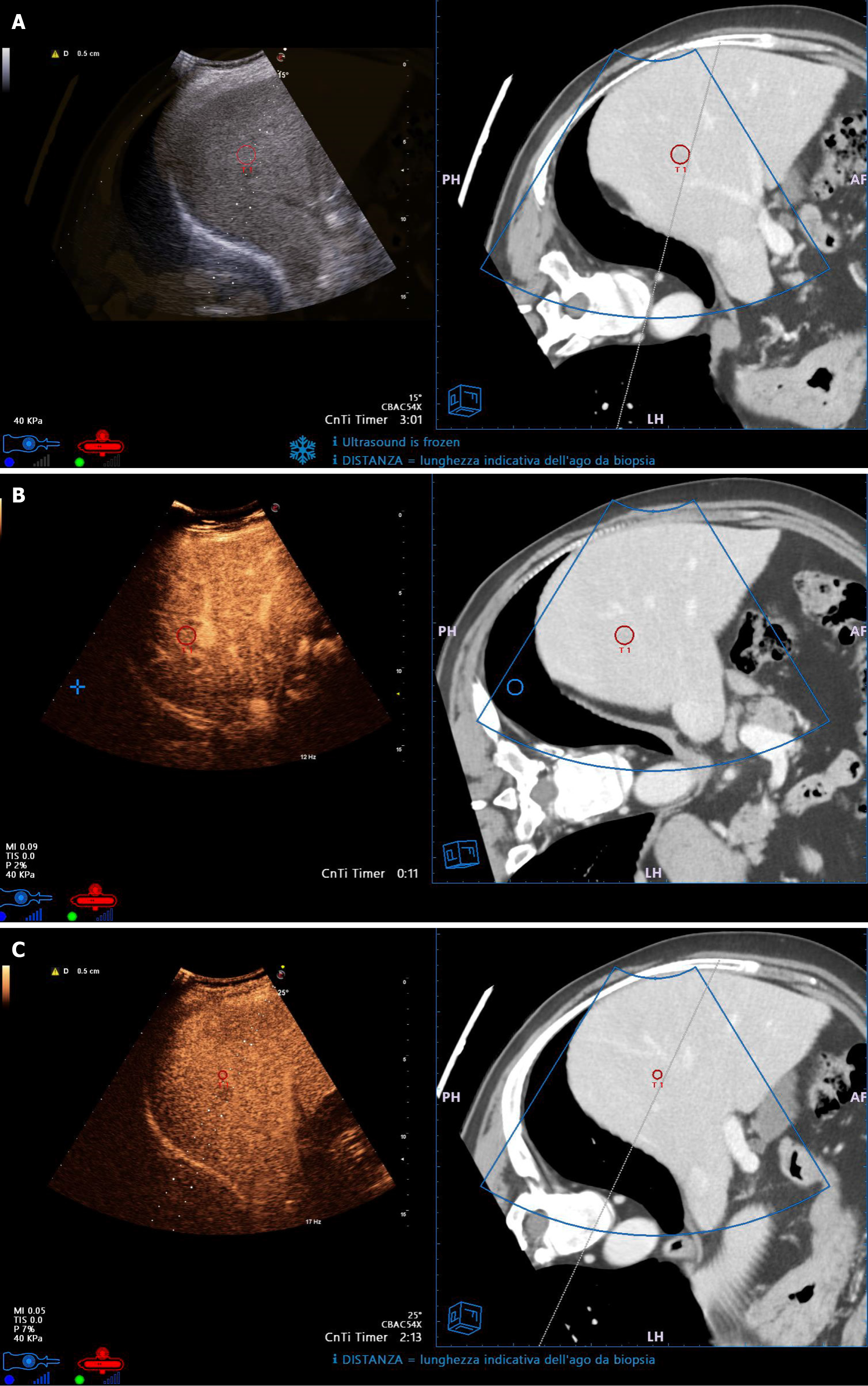Copyright
©The Author(s) 2024.
Artif Intell Cancer. Jul 18, 2024; 5(1): 96690
Published online Jul 18, 2024. doi: 10.35713/aic.v5.i1.96690
Published online Jul 18, 2024. doi: 10.35713/aic.v5.i1.96690
Figure 1 Small hepatocellular carcinoma with low visibility on ultrasound.
A: Fusion Imaging (FI) allows to precisely identify and target the lesion (red circlet in both left and right sides of the split screen); B: Contrast-enhanced ultrasound (CEUS) shows hyperhancement in the arterial phase (left side of the split screen); C: CEUS shows wash-out in the portal-venous phase (left side of the split screen). FI allows correct guidance of the needle electrode insertion for thermal ablation (dotted line in CEUS images, continuous line in Computed Tomography images).
- Citation: Tombesi P, Cutini A, Grasso V, Di Vece F, Politti U, Capatti E, Labb F, Petaccia S, Sartori S. Past, present, and future perspectives of ultrasound-guided ablation of liver tumors: Where could artificial intelligence lead interventional oncology? Artif Intell Cancer 2024; 5(1): 96690
- URL: https://www.wjgnet.com/2644-3228/full/v5/i1/96690.htm
- DOI: https://dx.doi.org/10.35713/aic.v5.i1.96690









